FreezeFrameStudio
Liquidity may become a significant market issue over the next two weeks as we approach quarter end. Not only should Quantitative Tightening (QT) start to pick up dramatically, but the usage of the Fed’s reverse repo facility also is likely to increase. These two factors may result in liquidity in the market thinning out, creating more volatility and lower stock prices.
The Fed’s System Open Market Account (SOMA) shows the Fed has about $10.0 billion T-Bills and $9.8 billion in T-Notes and Bonds that came due on Sept. 15. Additionally, there will be approximately $32 billion in bills to mature by the end of the month and about $34 billion of T-Notes and Bonds to mature as well. There could be around $85 billion of Treasury to mature before month end. But the Fed caps the amount of the roll-off for the Treasury at $60 billion, which would suggest the total amount of the Fed’s $60 billion allotment of Treasuries will roll off the balance sheet this month.
To this point, QT has been slow to develop, making it a non-event.
But what’s important here is that if total holdings of the Fed begin to decline, it could further reduce the size of the reserve balances, which already have fallen dramatically. Reserve balances fell sharply this week, dropping to around $3.16 trillion.
Overall, changes in reserve balances have not been driven by changes in the overall size of the Fed balance sheet. They have been caused by significant increases in reverse repo activity and changes in deposits with Federal Reserve banks, excluding reserve balance. As these two items rise and fall, they add to or subtract from liabilities pushing reserve balances higher or lower, creating large fluctuations in reserve balances.
More importantly, we are now entering quarter end. Generally, we see reverse repo activity ramp up during quarter end, which begs the question that, over the next two-week liquidity can become problematic for the markets. A surge in repo activity into month end that pushes above $2.3 trillion could lead to an additional drain on the reserve balances of potentially more than $125 billion.
Assuming everything stays even and reverse repos are the only major line item to see a significant change, it could result in reserve balances falling to around $3 trillion. That would not include the roll-off of the additional Treasuries from QT. This could be terrible news for equities, as the S&P 500 has been highly correlated to changes in reserve balances over the years.
Data shows signs of liquidity strain in the market already as the depth of book for the S&P 500 e-mini futures has thinned out dramatically, while the spread between the bid and ask has widened. Data from the CME group shows that starting around December, the book’s depth began to shrink below the historical range, while the spread between the bid and ask started to widen. Of course, that was around the same time the reserve balance began to fall.
Interestingly, from mid-July to late August, the bid-ask spread began to narrow, and the depth of the book started to expand, a sign of improving liquidity. At the same time, we also saw a significant surge in the reserve balances. The improvement in liquidity helped the equity market rally significantly.
Over the summer, as reserve balances expanded, we saw financial conditions around margin and leverage ease, making it more readily available. This easing not only allowed liquidity to improve but also expanded overall market leverage, which helped feed into the rise in equity prices.
Interestingly, conditions around the margin began to tighten again around the same time the reserve balance began dropping in mid-August, leading to the peaking and reversal of the S&P 500.
As we approach the quarter’s end, a further drop in reserve balance could lead to tighter financial conditions around margins and less liquidity in the equity market. Ultimately this could lead to equity prices suffering more significant losses and seeing lower prices between now and the first week of October.
If anything, this means that volatility in the equity market is just starting.


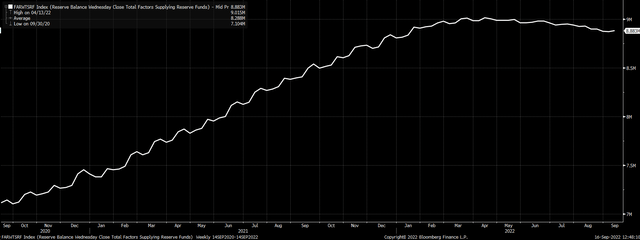
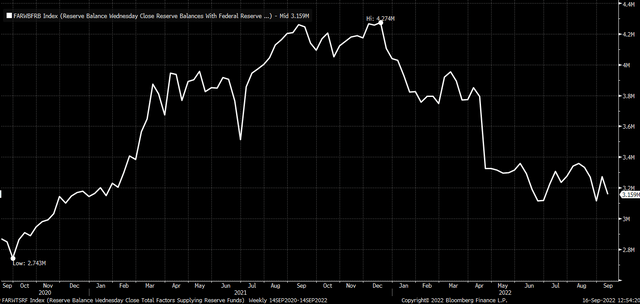
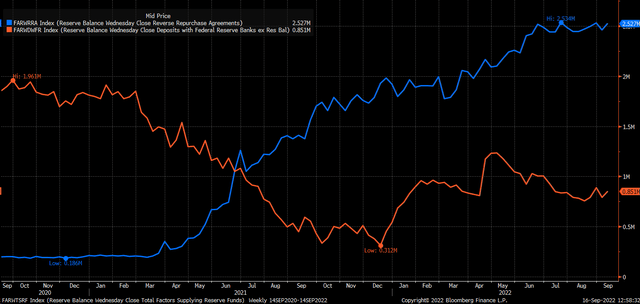
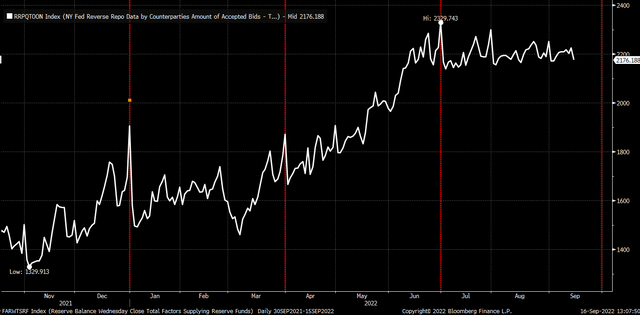
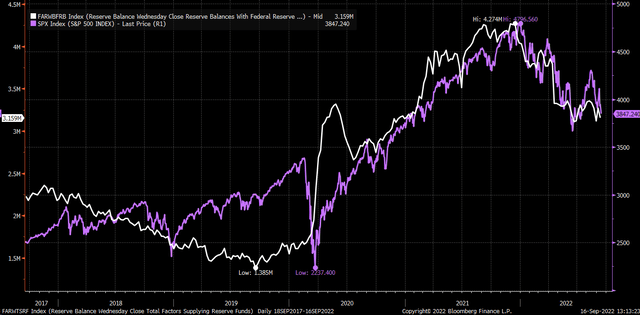
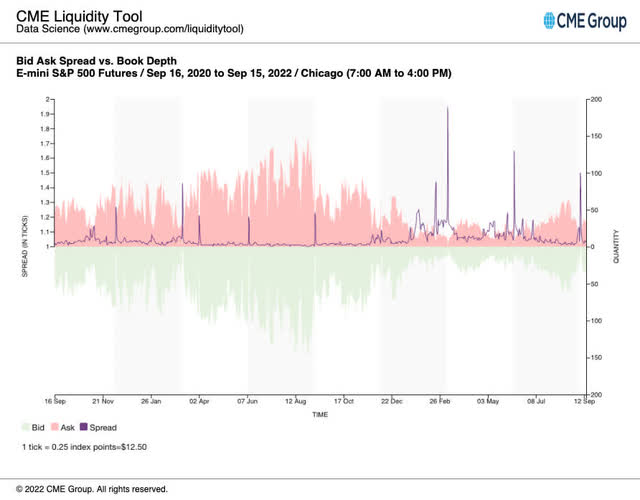
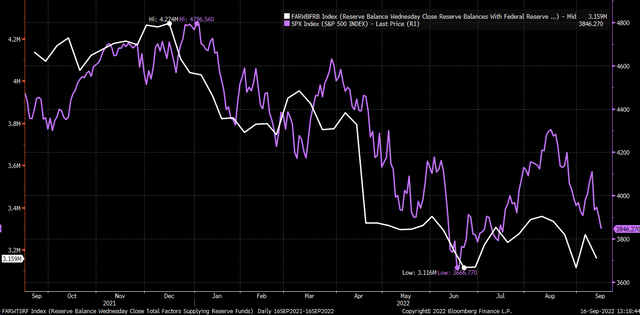
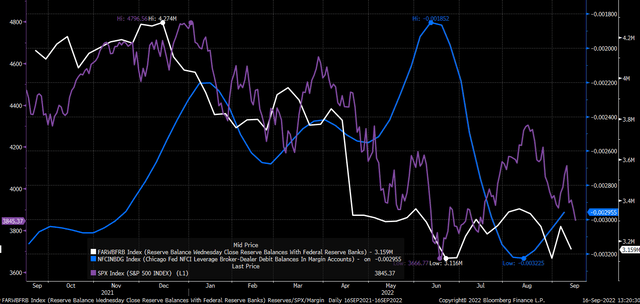
Be the first to comment